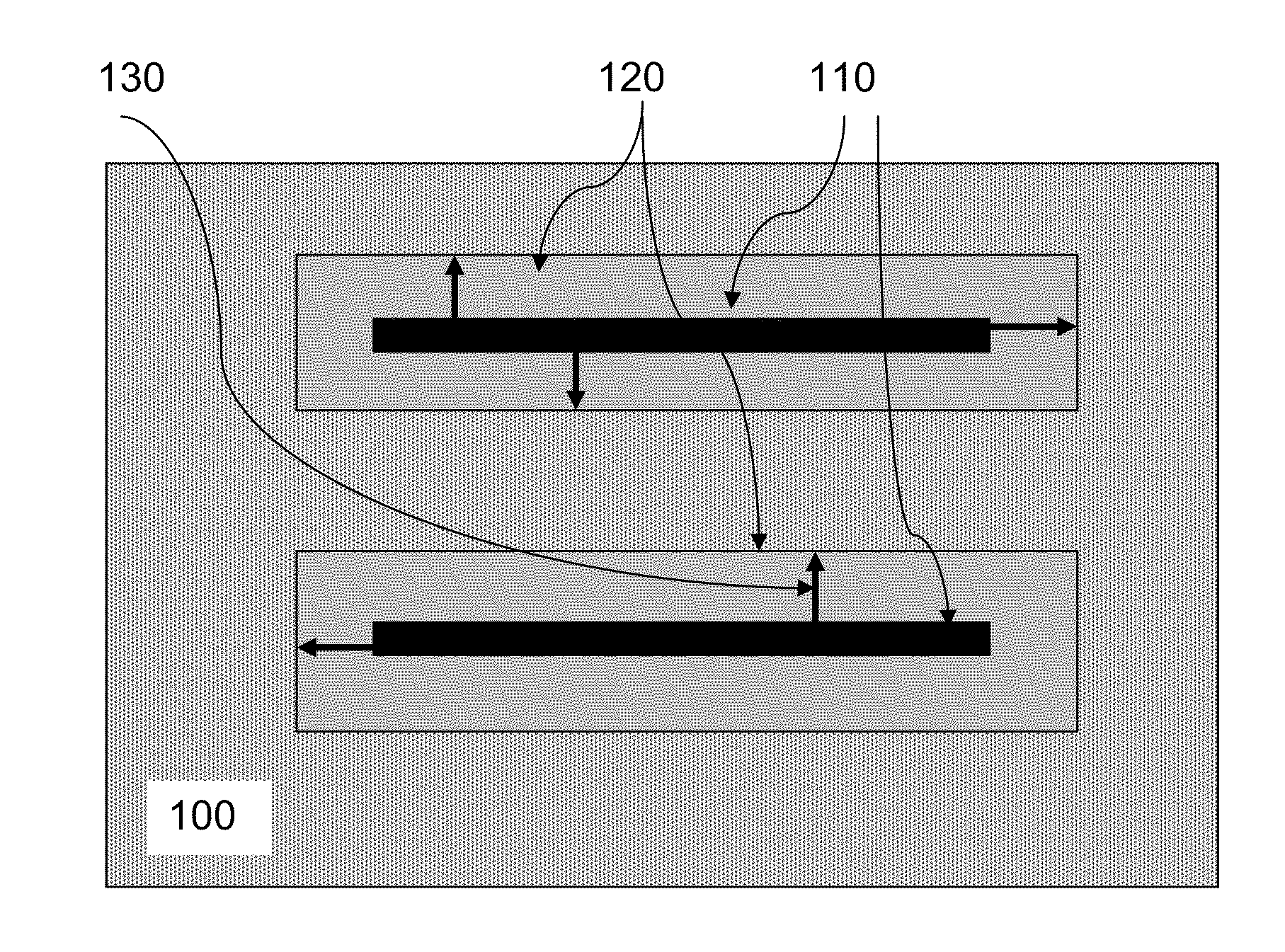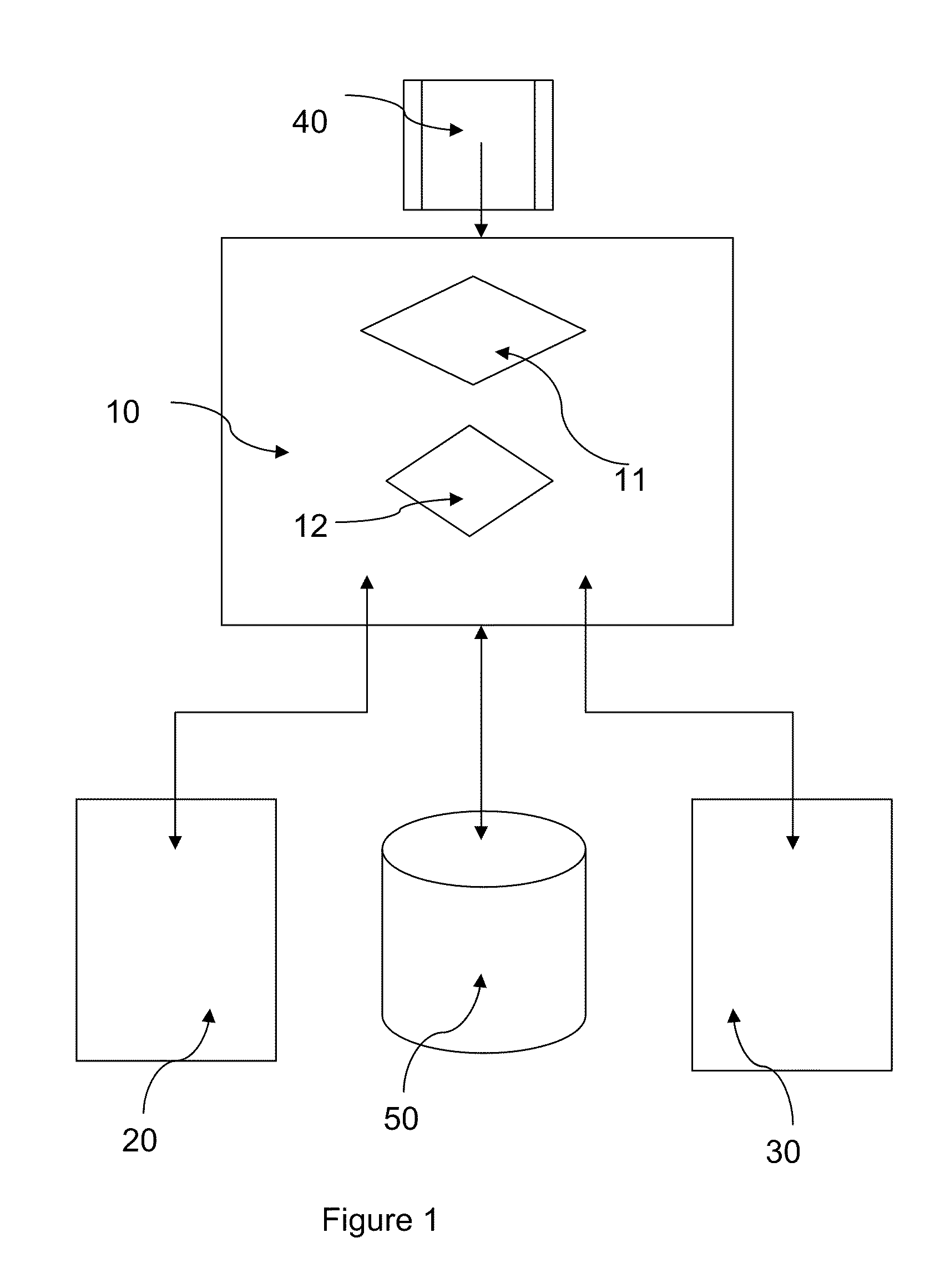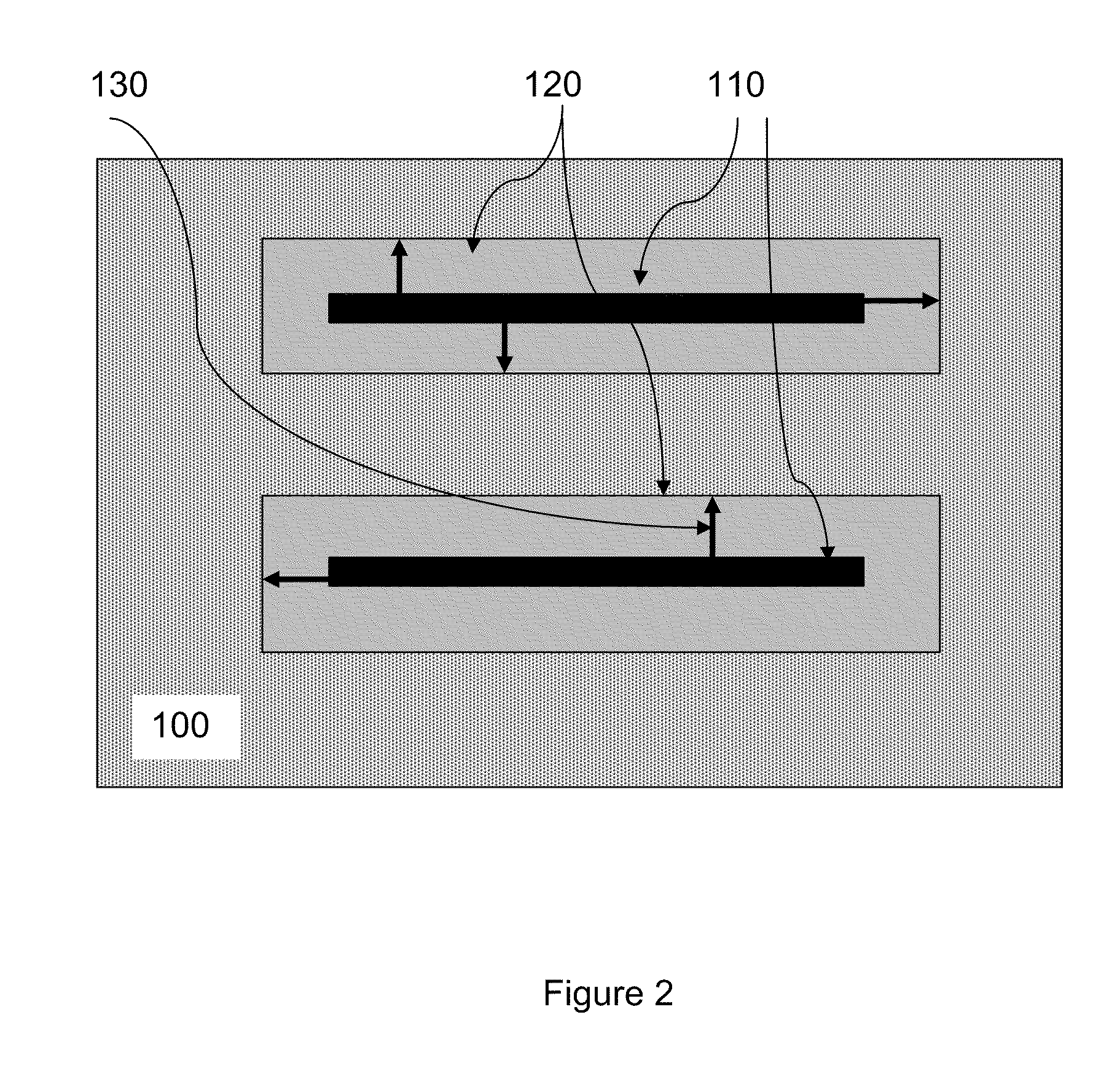Activation-deactivation process on the ground for an aircraft traffic alert and collision avoidance system
- Summary
- Abstract
- Description
- Claims
- Application Information
AI Technical Summary
Benefits of technology
Problems solved by technology
Method used
Image
Examples
Embodiment Construction
[0036]An interrogating function of an alert and collision avoidance system is put into operation when the plane approaches a takeoff / landing runway, and this function is deactivated when the aircraft moves away from the runway. This principle is illustrated in FIG. 2, which shows a portion of an airport site 100, specifically the take-off / landing runways 110 and the areas 120 surrounding these runways 110. Within the areas 120, the alert and collision avoidance system must normally be activated. These areas 120 are defined by a given distance threshold 130 extending around the runways 110. The distance threshold may vary from case to case. For example, the distance threshold 130 could be 25 m, 50 m, 100 m, around a runway or any other value deemed relevant, depending on different criteria such as runway configuration, the space between runways, the intensity of traffic, etc. This distance threshold is not necessarily the same on all sides of the runway, nor for each runway at a give...
PUM
 Login to View More
Login to View More Abstract
Description
Claims
Application Information
 Login to View More
Login to View More - R&D
- Intellectual Property
- Life Sciences
- Materials
- Tech Scout
- Unparalleled Data Quality
- Higher Quality Content
- 60% Fewer Hallucinations
Browse by: Latest US Patents, China's latest patents, Technical Efficacy Thesaurus, Application Domain, Technology Topic, Popular Technical Reports.
© 2025 PatSnap. All rights reserved.Legal|Privacy policy|Modern Slavery Act Transparency Statement|Sitemap|About US| Contact US: help@patsnap.com



